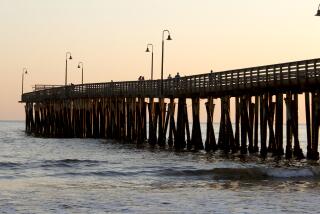Aerial view of construction underway at Cotino, a master-planned community that Disney is building in Rancho Mirage that features a 24-acre lagoon. (Allen J. Schaben/Los Angeles Times)
- Share via
RANCHO MIRAGE, Calif. — Mickey Mouse is making his way to the Coachella Valley — whether locals want him there or not.
In Rancho Mirage, the Walt Disney Co. is making progress on an ambitious development that promises to sprinkle some Disney magic into real estate. Dubbed Cotino, the master-planned community is the first of the entertainment giant’s “Storyliving” projects, designed for home buyers who want to bring Disney deeper into their everyday lives.
Donald Duck won’t be delivering your mail, but the specs offer plenty of Disney flourishes, including an “Incredibles”-themed gathering space and a 24-acre lagoon. It’s a massive undertaking, with 1,932 planned homes spread across more than 600 acres.
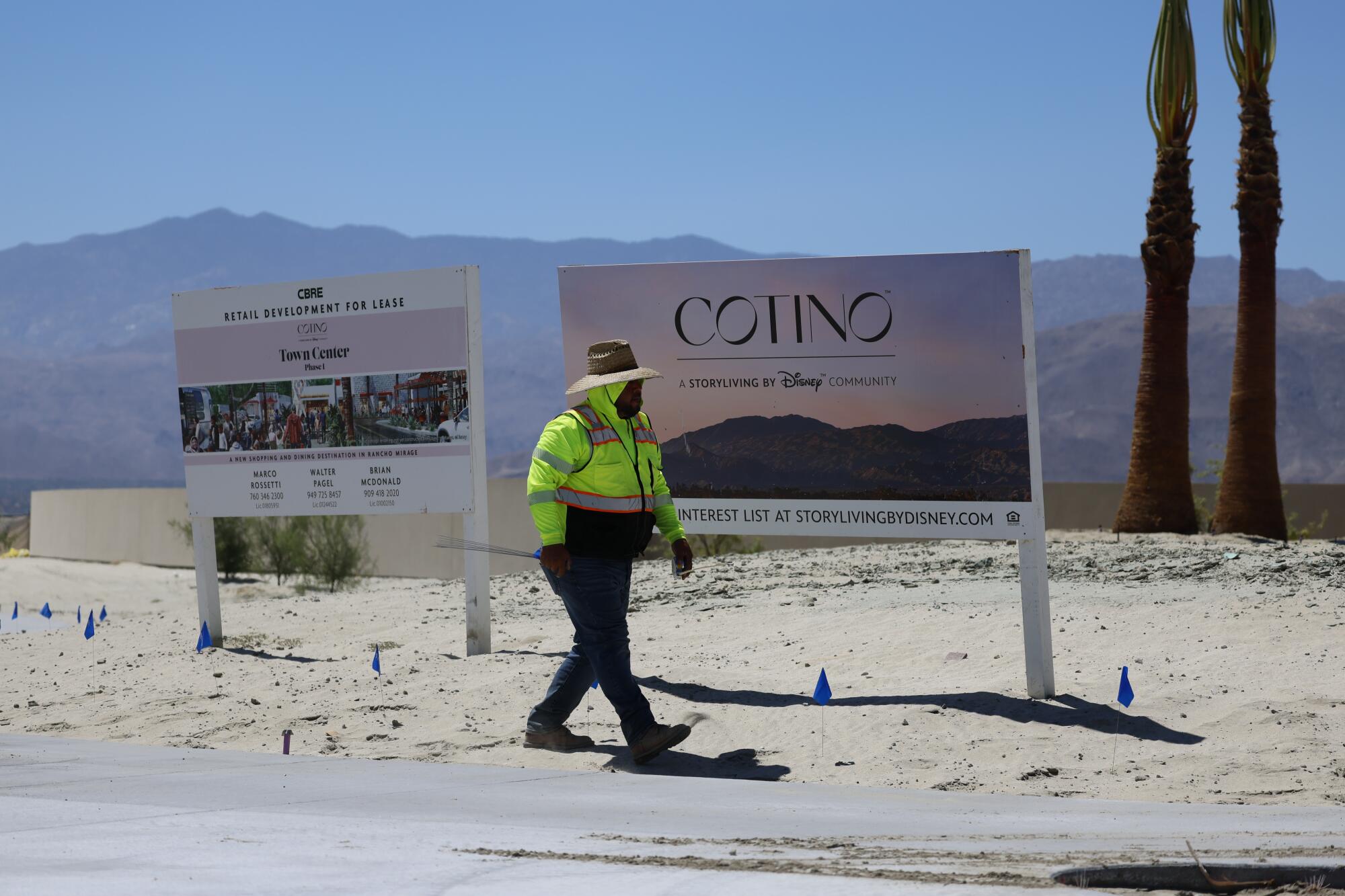
But some desert dwellers say they’ve already found their happiest place on Earth — and it has nothing to do with Disney.
“Rancho Mirage is quiet, peaceful and friendly,” said Mark Wolpa, who moved here from San Francisco in 2008. “But Cotino’s bringing pollution, commotion and chaos to an area that didn’t want it.”
Wolpa lives down the street from the Cotino site and said once-empty roads have swelled with traffic as tractors, cranes and trucks shut down lanes and clog the road.
On a visit last week, excavators working along Bob Hope and Frank Sinatra drives slowed traffic as the site’s exterior was taking shape. A roughly 6-foot wall separates the property from the street, and drought-tolerant landscaping spruces up the sidewalk that wraps around it.
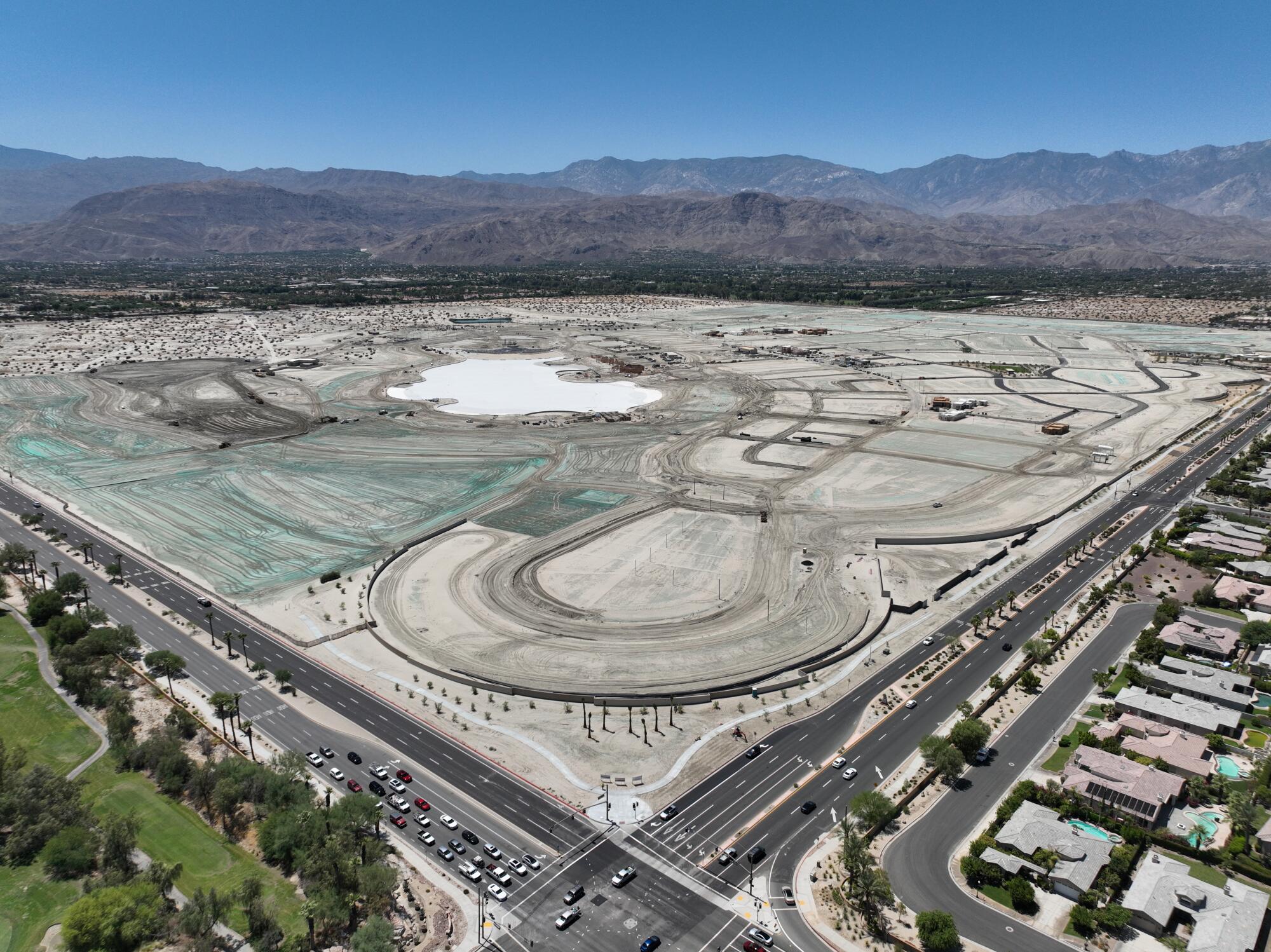
Wolpa said his main concern is the water usage required to fill and maintain a lagoon in the middle of the desert.
The artificial oasis is called Cotino Bay, and Disney is touting it as the centerpiece of the project. Once finished, it’ll feature sandy beaches, swimming, water sports and a promenade.
For the project, Disney tapped Crystal Lagoons, a company that specializes in creating massive bodies of water. The company keeps the specifics of its technology under wraps, but the website claims its lagoons consume 33 times less water than an 18-hole golf course and replace much of the water lost to evaporation by capturing rainwater. The Rancho Mirage area receives an average of around 6 inches of rain a year.
In a Desert Sun guest column in 2022, Rancho Mirage then-Mayor Ted Weill defended the lagoon, writing that property owners have a right to develop their land in accordance within city standards and pointing out that Disney’s plans fall within its allotted water budget. Weill noted that the Coachella Valley has 54,000 swimming pools, so the lagoon is nothing new, and Disney even downsized the original design by 10 acres.
As details about the lagoon kept trickling out that year, Wolpa became upset, since the valley was in the middle of a major dry spell.
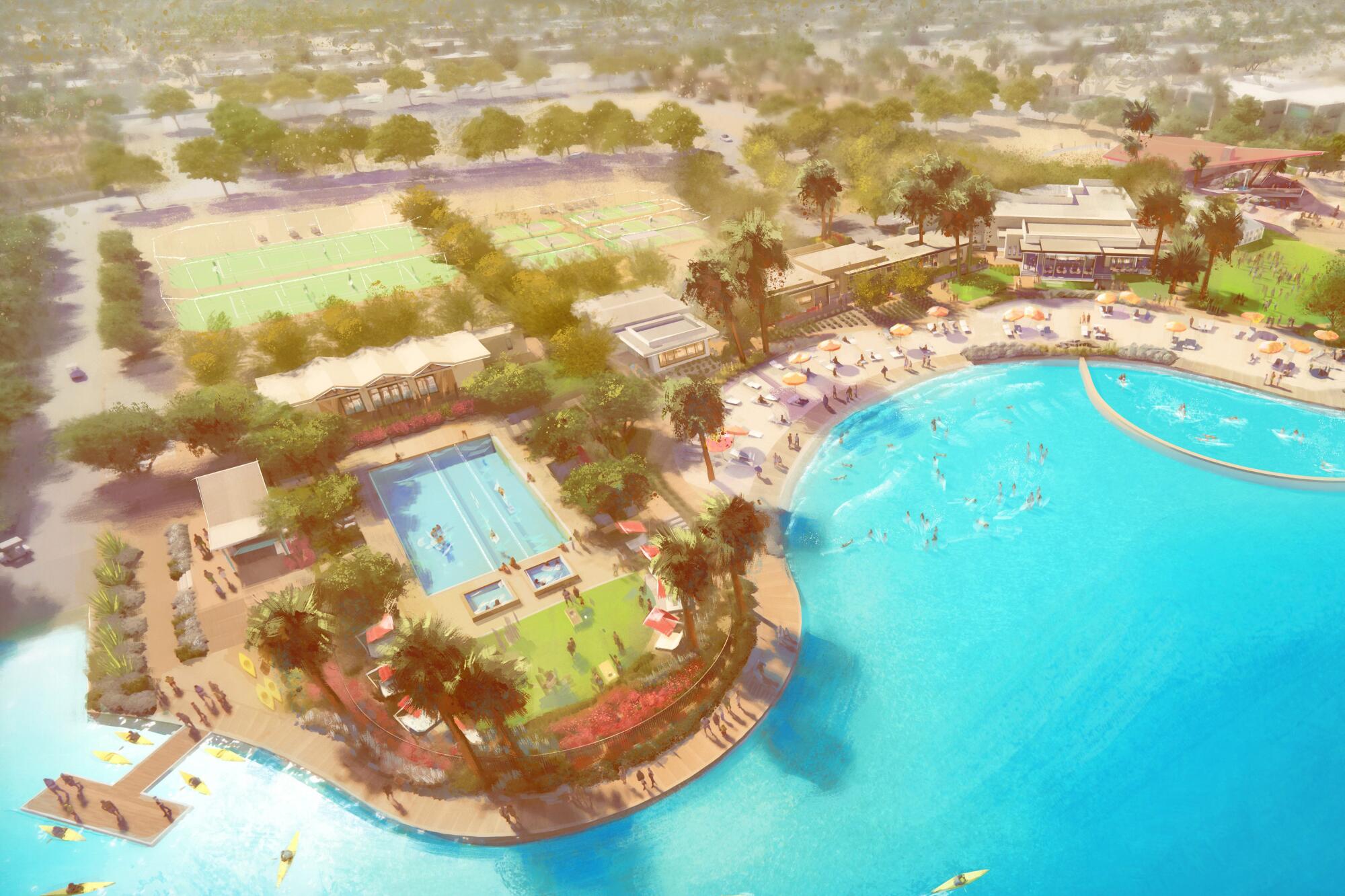
“We had tight restrictions on water usage at the time. Everyone was ripping out their yard and replacing it with artificial grass. And meanwhile, I started seeing signs for a massive lagoon,” Wolpa said.
Water restrictions were lifted after significant rainfall over the last year, but Wolpa’s thoughts haven’t changed.
“It’s still a desert, and water is still a precious resource,” he said. “To think about having a lagoon here just feels wasteful.”
Although a lagoon the size of 18 football fields might seem out of place in the desert, Rancho Mirage already is something of a man-made oasis.
Dense trees line the streets, and grassy golf courses sit east and west of the property. Across the street, a gated neighborhood lures passersby with a rushing waterfall at the entrance.
The lagoon won’t open for two more years, a Disney employee told The Times, but construction on the rest of the development is underway. Home sales started this year, and the initial batch of 300 homes is being developed. The first residents will move in during early 2025.
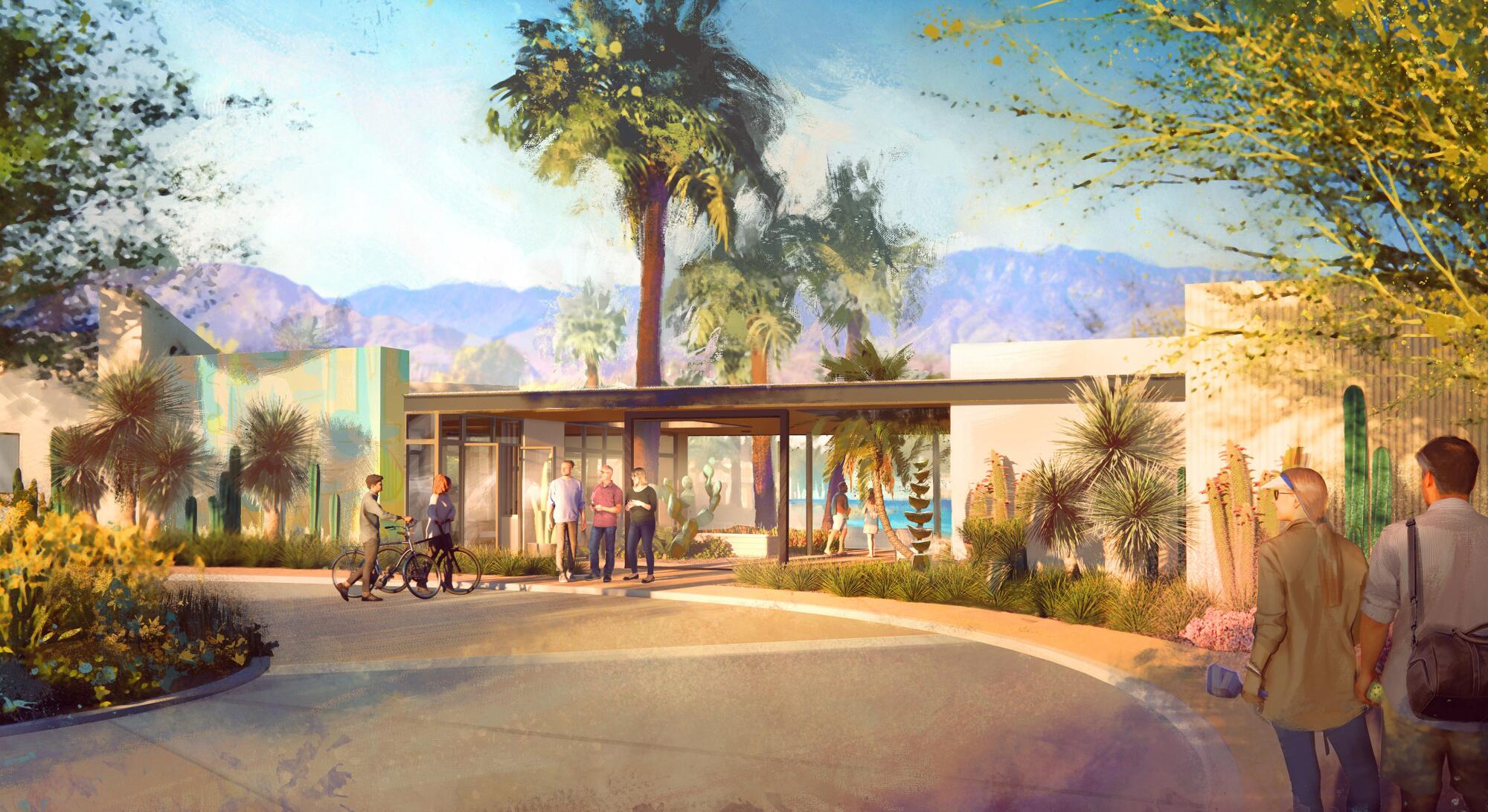
Katie Dorr, a real estate agent based in Dana Point, has toured Cotino twice — once to see for herself, and once with a client interested in purchasing a place.
“It all feels very Disney,” Dorr said. “There’s extreme attention to detail, colors and artistry.”
During her first tour, she was greeted by a Disney employee and shown a movie explaining the vision behind Cotino. Then, she toured a room with a map of the land and a miniature replica of Cotino Bay.
Renderings of the houses showcase designs meant to fit the Coachella Valley style, with neutral color palettes that blend in with the desert and the mid-century architecture for which Palm Springs has become famous. Floor plans range from 2,200 square feet in the Cottage Collection up to 3,900 square feet in the Grand Collection.
Bill Miller, a gardener and environmentalist who bought a Palm Springs property in 2000, is worried less about the architecture and more about the wildlife being cleared out to make room for nearly 2,000 new homes.
“Critters are being pushed out. Birds, bees, butterflies, rabbits, lizards, roadrunners — none of these are considered when the landscaping goes in,” he said.
Miller drives by Cotino often and said the 618-acre site once housed hundreds of creosote bushes, a shrub that animals use to hide from hawks and take cover from the sun.
“The big ones are ancient. They can be up to 300 years old,” he said. “And once you pull them out, they’re gone forever.”
Miller also works as a handyman and talks to clients around the Coachella Valley to keep tabs on how people are feeling about the project. He said most feel the same as he does: They hate to see the desert torn up for more housing — especially luxury housing.
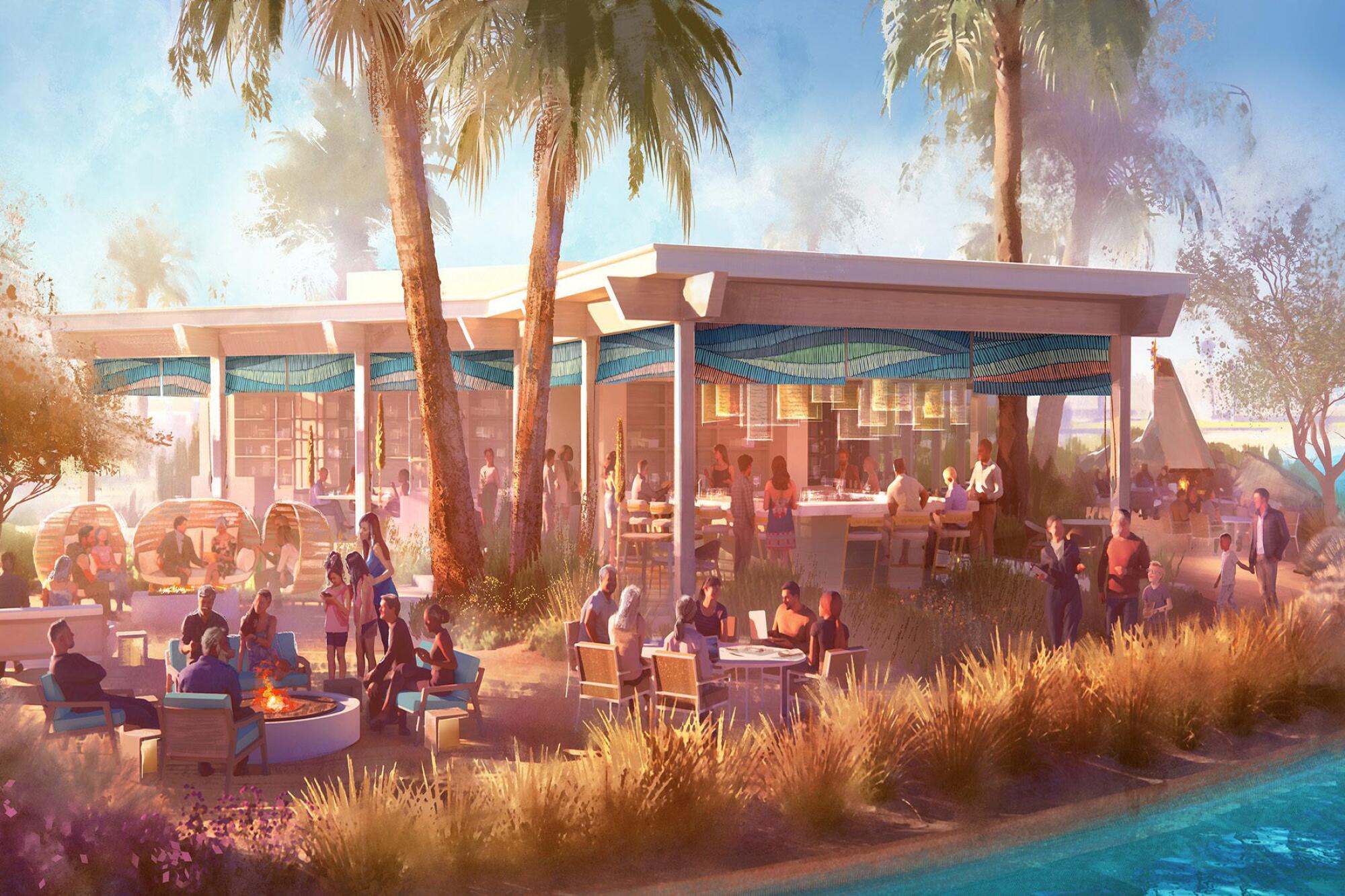
Cotino homes won’t be cheap. Prices start in the upper $1-million range and go above $2 million.
According to Zillow, Rancho Mirage is the second-priciest city in the Coachella Valley with a median home value of of $878,659, second only to Indian Wells. Even so, each of the 1,932 homes coming to Cotino will be higher than the current median.
“Nothing’s being built for low-income. Everything that goes in is above $1 million,” Miller said.
He’s also concerned about the vast scale of the project, and the way it’ll alter the area’s identity. As of 2022, Rancho Mirage had roughly 8,740 households, according to Data USA. So by the time Cotino is complete, Disney homes will account for nearly a fifth of the city’s housing stock.
Jim Thomas lives in Indio, and he’s seen firsthand the effect that large-scale projects can have on a community, good and bad. The Coachella and Stagecoach music festivals bring in more than $100 million to Indio’s economy and $600 million across the wider Coachella Valley, according to a 2016 study from the Coachella Valley Economic Partnership.
The festivals have changed the fabric of the city, contributing to a thriving downtown area and a glut of short-term rentals that have popped up to meet the demand of music fans. Thomas thinks a Disney development will surely have an effect on the area’s cultural and financial identity — he’s just not sure whether it’ll be for better or for worse.

“Rancho Mirage is already one of the richest cities in Southern California, and this will only add to its wealth,” Thomas said. “But where will the workers live? The housekeepers, landscapers, bartenders and hospitality employees?”
Last month, Rancho Mirage’s City Council approved a 234-unit apartment complex with affordable housing, according to the Desert Sun, but the green light came after years of struggling to develop such housing. For reference, that complex will cover 10 acres — just 1.6% of Cotino’s acreage.
“There’s uproar whenever someone tries to develop multifamily housing here,” Thomas said. “Yet Disney and its million-dollar homes are welcomed with open arms.”
A Disney employee confirmed that the project doesn’t include plans for employee housing but didn’t specify whether it plans to develop affordable housing. In December, the Desert Sun said the project had no plans for affordable or low-income units.
Katherine Holt, a Rancho Mirage resident and Disney fan, is cautiously optimistic about the development.
“It’s Disney, so we know it’s going to be done well,” she said. “But will it be a part of the community, or take over the community?”
More to Read
Sign up for This Evening's Big Stories
Catch up on the day with the 7 biggest L.A. Times stories in your inbox every weekday evening.
You may occasionally receive promotional content from the Los Angeles Times.

